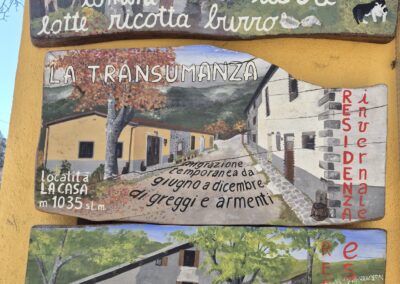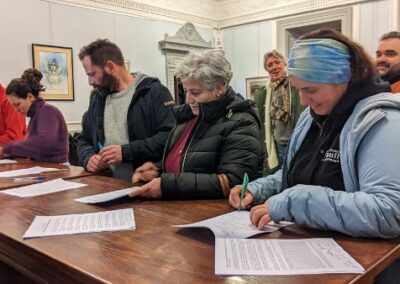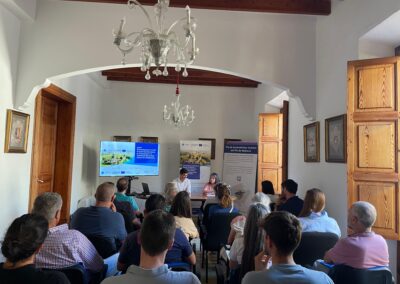Focus on three of our innovative projects aimed at revitalising rural areas in the Mediterranean. REVIVE creates sustainable local economic models; RuralMED Mobility facilitates access to electric mobility; and ArtMED helps transport authorities plan autonomous and on-demand transport.
Discover how Interreg Euro-MED projects use innovative solutions to address the specific requirements of each area.
REVIVE: co-creating customised local business models
The REVIVE project provides tools for revitalising rural areas in the Mediterranean region, which are often threatened by a loss of attractiveness, a scarcity of public services and an ageing population, as a result of the concentration of activities associated with metropolitanisation.
However, this threat is not inevitable.
‘Across the Mediterranean, sectors such as sustainable agri-food production, eco- and cultural tourism, and renewable energy solutions consistently emerge as key engines of growth,’ notes Danica Nesevic, regional coordinator within The Regional Rural Development Standing Working Group in South East Europe (SWG-SEERURAL) and in charge of the project’s communication.
REVIVE offers a ready-to-use methodology for developing effective and resilient regional business models. Co-constructing these plans with local authorities, the economic sector, researchers and residents ‘ensures that the solutions are innovative, rooted in the identity of each region, and generate green and sustainable jobs,’ continues Danica Nesevic.
These plans include an economic, a digital and a territorial marketing component. The latter two support the economic development strategy in attracting investors and creating opportunities for new products. ‘For example, by applying circular economy principles to agri-food chains, communities can reduce waste, add value to by-products, and open new markets,’ explains Danica Nesevic. Similarly, tourism models that highlight authentic local experiences from gastronomy to cultural heritage can attract visitors while ensuring benefits stay within the community.’
The REVIVE project is now entering the roll-out phase in seven pilot areas.
Let’s take a closer look at two of them:
Pistoiese Appennines Food Community
In Tuscany, the jointly designed plan provides for the creation of the Pistoiese Apennines Food Community, which aims to increase cooperation between producers, tourism stakeholders and consumers; revitalise agricultural and culinary heritage; and create short supply chains to reduce environmental impact.
Action Plan of Pla de Mallorca
On the island of Majorca, one of Europe’s most popular tourist destinations, a B2B platform is strengthening ties between local producers and the hotel and restaurant sector, offering product sales as well as training to develop digital and immersive tourist experiences.
ArtMED: planning today for tomorrow’s rural mobility solutions.
Mobility in 2050 will be very different from today. ‘Citizens would not own their own transport but rather access it when needed via user-friendly digital platforms’, explain the ArtMED project managers. ‘Rural areas could be seamlessly connected to regional hubs through a mix of autonomous shuttles, shared e-vehicles, and on-demand micro-mobility options, adapted to daily needs.’
This vision is neither an illusion nor a utopia. After an initial benchmark, the project has developed the .MOBI tool for planning the implementation and impact of on-demand mobility projects:
- .MOBI is designed for local transport authorities, mobility planners and consultants, public transport operators exploring on-demand models and policy-makers.
- .MOBI estimates the number of required vehicules for a given service, explores deployment scenarios and assesses financial viability and revenue flows.
- It has been deployed in four pilot territories, from Lombardy to the city of Lisbon, passing through the municipalities of Palaio Faliro (Greece) and Postonja (Slovenia), contributing greatly to their planification work.
All this work highlights two main implementation trends.
First, the development of autonomous shuttles is not limited to large cities. It is also proving effective in smaller towns. In areas affected by population decline, these solutions provide accessibility and dignity for residents. ‘Automated on-demand mobility is transforming the perception and use of public transport in rural areas,’ say the project’s communications managers.
Then, on-demand transport services must focus on the few mobility needs that are most important for the area. ‘In Postonja, the introduction of a flexible transport service has reduced dependence on private cars for schoolchildren, the elderly and those with specific mobility needs. As journeys are booked in advance by users, planning is smooth and costs are controlled.’
Explore the .MOBI tool here! The idea is now to promote it to at least 30 local public transport authorities and 50 decision-makers of the Interreg Euro-MED cooperation area.
RuralMED Mobility: when rural mobility meets sustainable mobility
Mobility in rural areas remains heavily dependent on private cars. In order to actively contribute to decarbonisation, the RuralMED Mobility project began by identifying successful initiatives in terms of electric vehicle charging and the integration of sustainable mobility solutions into transport networks.
Experiences such as the Mobi.E network in Portugal, a unique platform enabling users to recharge their electric vehicles in the vast majority of public and private charging points across the country, ‘show how cooperation and integrated management can make charging infrastructure viable and indispensable in the long term,’ explains Francisco Javier Márquez, project manager of RuralMED Mobility at the Extremadura Energy Agency.
More than just a source of inspiration, this initial work provided useful feedback for the roll-out of the project’s seven pilot actions: five of them, located in Portugal, Spain, Italy, Croatia and Greece are focused on Mobility as a Service (MaaS) solutions and the other two are focused on electromobility.
‘Analysing what worked and what did not in previous projects has helped us avoid common mistakes, replicate successful models, and adapt them to the specific conditions of rural and remote Mediterranean territories. In short, it gave us both inspiration and practical guidance to ensure that our pilots are more robust, realistic, and impactful. It helped us imagine how RuralMED pilots can evolve into more integrated and lasting solutions,” continues Francisco Javier Márquez.
The impact analysis of each pilot action is at the heart of the project, as indicators are collected in real time on usage, recharging and greenhouse gas emission reductions. 2026 will be a key year for replicating the project, with:
- Preparing a toolkit for the reuse and transfer of pilot solutions.
- Dissemination of results through participation in thematic events, organisation of a major closing event in Spain and Portugal, and participation in policy-making activities.






